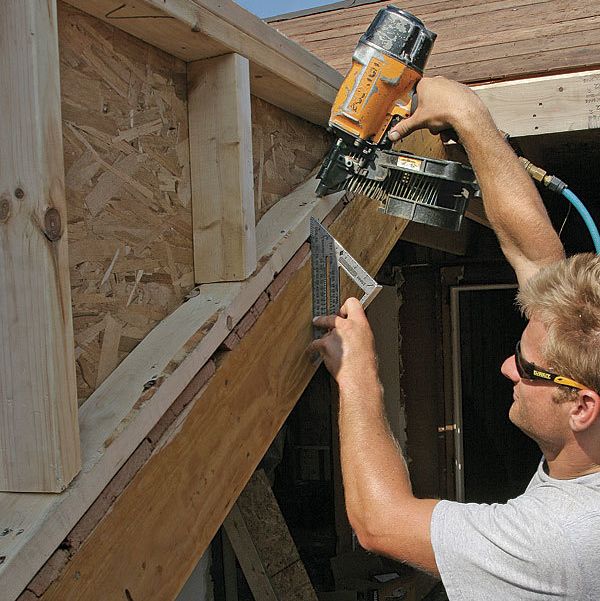Choosing the Right Framing Nailer
Narrowing this broad market starts with a decision about which nails you'll be shooting.

Synopsis: When it comes to framing nailers, the field is so large and wide-ranging that it’s almost impossible to find common ground on which to compare them in a tool test. For most carpenters who need to purchase a new tool, the best approach becomes determining which style of framing nailer best suits their needs. As builder Michael Springer writes, you first need to decide what nails you’ll be using before you purchase a framing nailer. These tools come in two styles, coil and stick. Coil nailers dispense coils of nails welded to thin wire; stick nailers shoot nails that have been assembled in angled sticks of 25 to 40 nails. Nail heads are either clipped or offset round. According to Springer, the must-have features for a quality framing nailer are good balance and feel; an aluminum or magnesium body; a selective-fire setting; and good depth-of-drive adjustment. Handy perks include nose magnets, built-in air filters, and nonmarring nose caps.
Builders often ask for tool tests of framing nailers, but all the variations on the market make that a tall order to fill. There are stick nailers with 20°-, 28°-, and 30°-magazine angles, not to mention coil nailers. Some tools max out at 3¼-in. nails, some at 3½-in. nails, and some at 4-in. nails or longer. Some tools shoot full round-head nails, clipped-head nails, or both. With the variety of models available from the major pneumatic brands, power-tool companies, and lower-cost clone and private-label manufacturers, the framing-nailer category must represent 100 or more tools. Here, my goal is to condense all the relevant information about these nailers into a brief guide, highlighting the latest technologies and features these tools have to offer.
It all starts with the nails
Picking a framing nailer starts with knowing the nails you’ll be shooting. You want a tool that you can keep supplied with nails easily and affordably. Regional preferences and sometimes even building codes dictate which fasteners—and therefore which tools—are common in your area.
California and other Western states have adopted full round-head nailers, while most of the rest of the country relies on clipped-head models. Specific code requirements have driven some of the divide, but these geographic tool preferences can be traced back to where the big nailer companies started, or at least to the regional markets where their distribution was originally focused. Think Bostitch in New England, Hitachi in the West, and Paslode and Senco in between. As the major players staked their claims, whatever type of nail their early tools required became the default favorite in the territory.
Regardless of nail type, follow the nailing schedule for each material, component, and assembly you construct as specified by the building code covering your area. Model building codes were written for hand-driven nails, so they specify only the size, spacing, and number of nails used for specific connections and applications, not the type of head. The International Code Council’s ESR-1539 report—which is free and widely available online—is written with an awareness of pneumatic nailers and is a good place to find the details of nailed connections (and equivalent connections) required to meet all the model building codes.
KNOW YOUR NAILS
Nail collation
Framing nailers come in two styles: coil or stick. Coil nailers have an adjustable canister that accepts a coil of nails strung together by two rows of thin wire welded to the shanks of the nails. These nails have a full round head. Stick nailers fit two angled sticks of 25 to 40 nails collated with wire, paper, or plastic, with the head of each nail nested just above the head of the nail in front of it. The style of nail head is usually based on the collation angle.
Full round-head nails are acceptable everywhere in the United States and for every type of framing connection. They are also typically available in thicker shank diameters. The downside is that nail heads take up space in a magazine, so you get fewer nails per stick.
 For more photos and details, click the View PDF button below.
For more photos and details, click the View PDF button below.
From Fine Homebuilding #230


